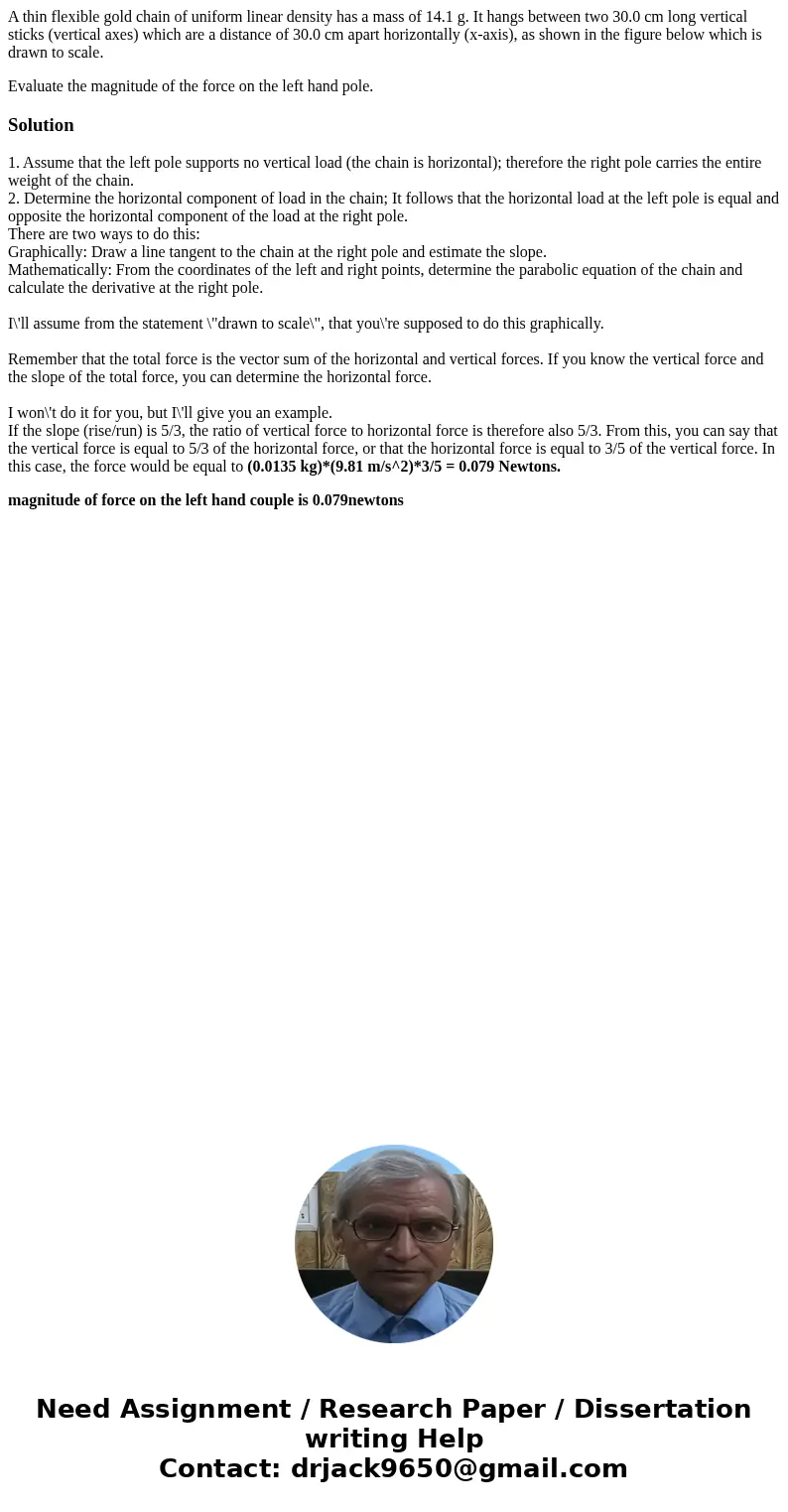A thin flexible gold chain of uniform linear density has a m
A thin flexible gold chain of uniform linear density has a mass of 14.1 g. It hangs between two 30.0 cm long vertical sticks (vertical axes) which are a distance of 30.0 cm apart horizontally (x-axis), as shown in the figure below which is drawn to scale.
Evaluate the magnitude of the force on the left hand pole.
Solution
1. Assume that the left pole supports no vertical load (the chain is horizontal); therefore the right pole carries the entire weight of the chain.
2. Determine the horizontal component of load in the chain; It follows that the horizontal load at the left pole is equal and opposite the horizontal component of the load at the right pole.
There are two ways to do this:
Graphically: Draw a line tangent to the chain at the right pole and estimate the slope.
Mathematically: From the coordinates of the left and right points, determine the parabolic equation of the chain and calculate the derivative at the right pole.
I\'ll assume from the statement \"drawn to scale\", that you\'re supposed to do this graphically.
Remember that the total force is the vector sum of the horizontal and vertical forces. If you know the vertical force and the slope of the total force, you can determine the horizontal force.
I won\'t do it for you, but I\'ll give you an example.
If the slope (rise/run) is 5/3, the ratio of vertical force to horizontal force is therefore also 5/3. From this, you can say that the vertical force is equal to 5/3 of the horizontal force, or that the horizontal force is equal to 3/5 of the vertical force. In this case, the force would be equal to (0.0135 kg)*(9.81 m/s^2)*3/5 = 0.079 Newtons.
magnitude of force on the left hand couple is 0.079newtons

 Homework Sourse
Homework Sourse